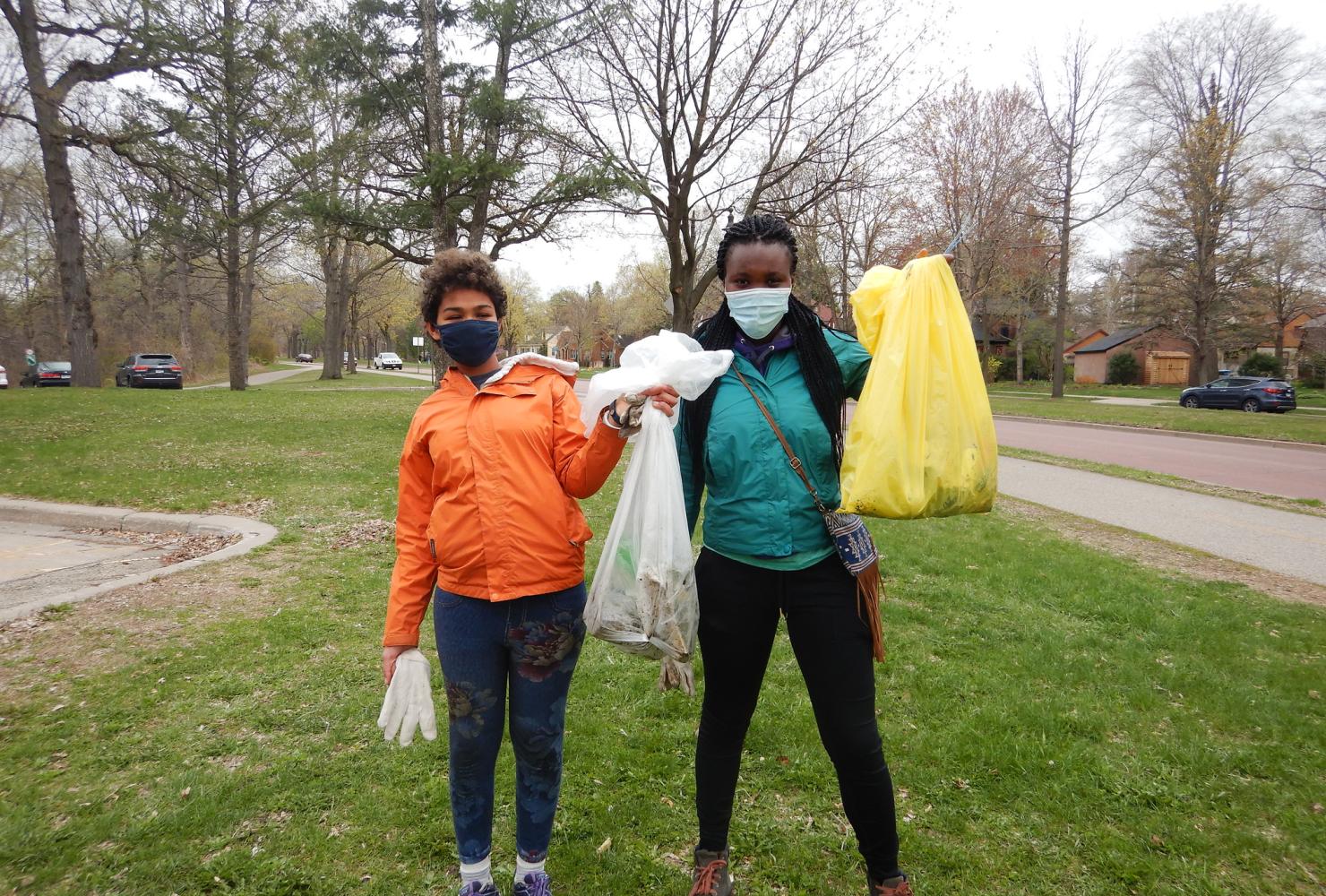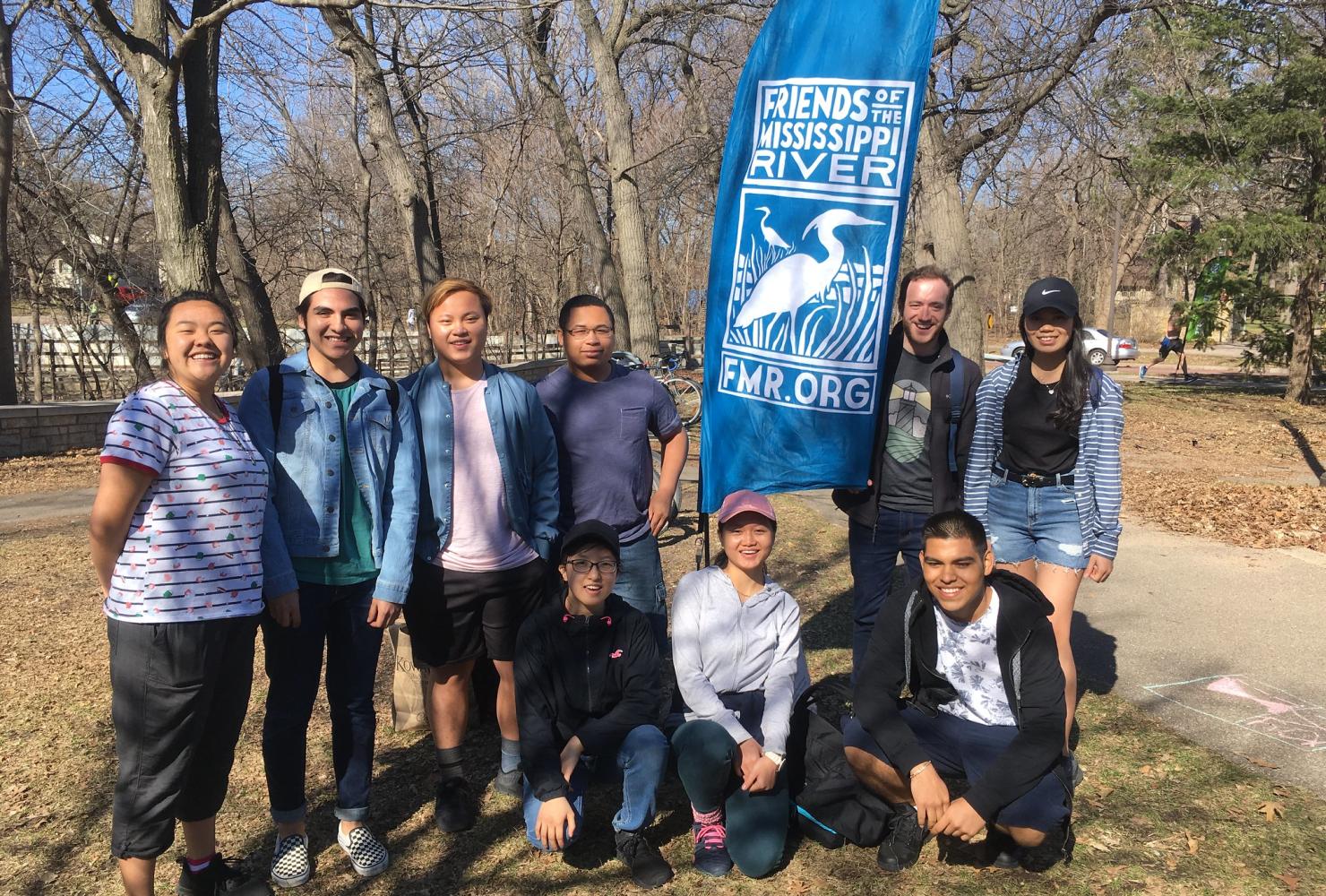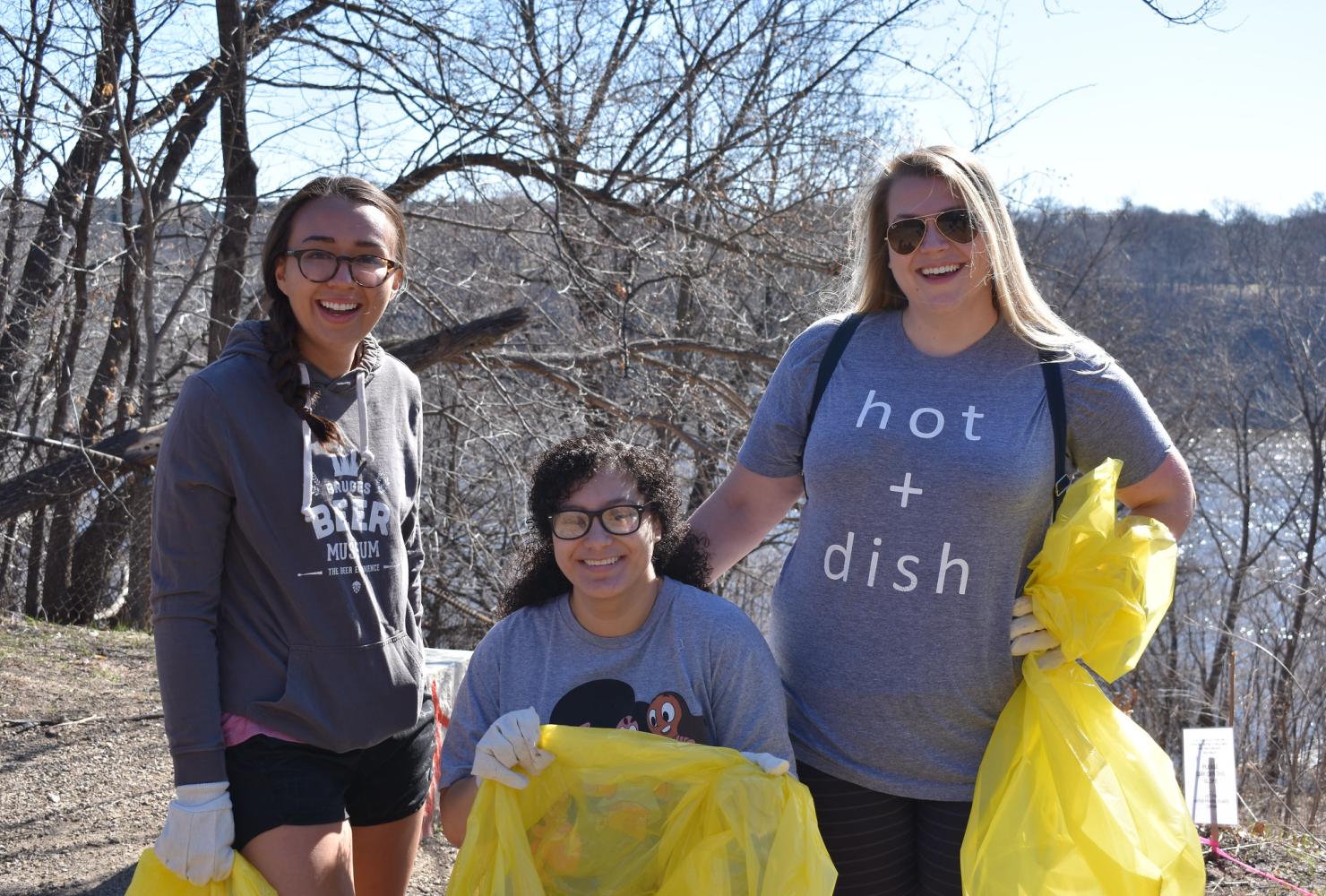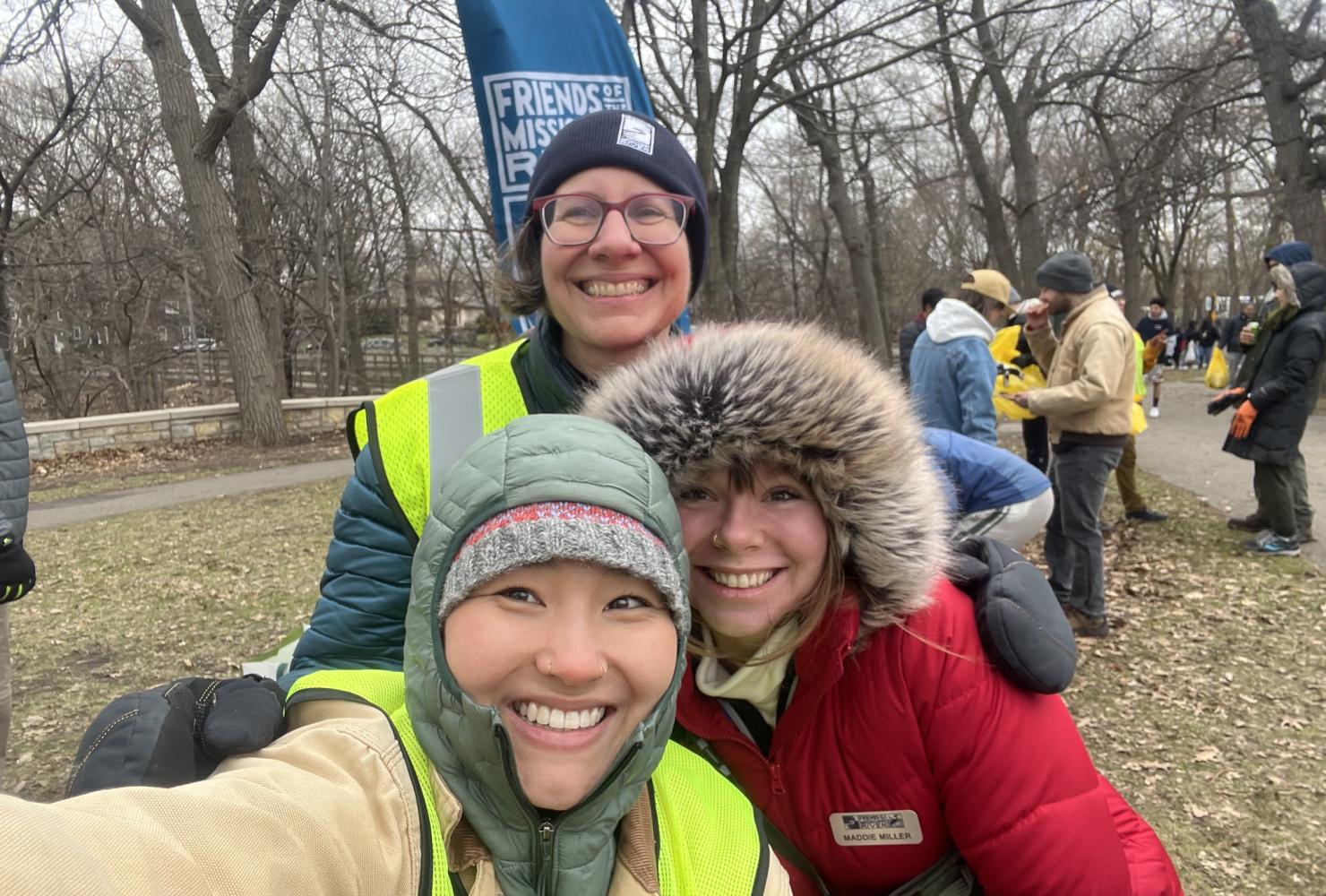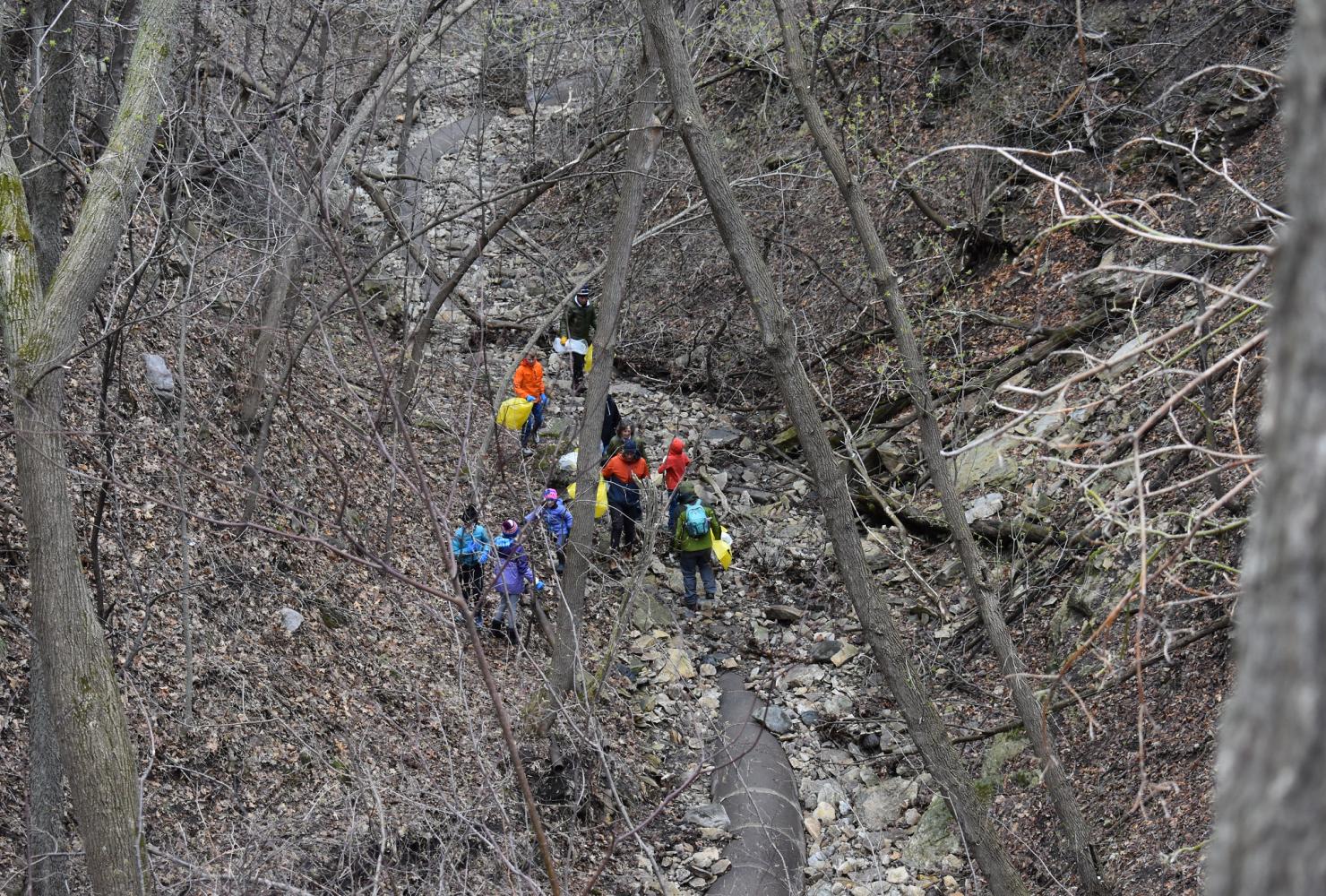Mississippi River Gorge

Forested limestone bluffs make up the only gorge on the entire length of the Mississippi River as it flows through the heart of the Twin Cities, flanked by beloved recreational parkways. Our restoration projects improve habitat in this urban oasis.
Where is the Mississippi River Gorge?
Geologically, the Mississippi River Gorge spans from St. Anthony Falls in downtown Minneapolis to the confluence with the Minnesota River in St. Paul. We restore land at multiple sites in the gorge, including these three along West River Parkway in Minneapolis.
- The sand flats at 34th Street and West River Parkway: A stretch of sandy beaches and floodplain forest where spring ephemeral plants thrive
- The oak savanna at 36th Street and West River Parkway: A beautiful and rare oak savanna, prairie, and woodland just off the main path
- The maple-basswood forest at East 44th Street and West River Parkway: One of the few places in the city where people can experience the Big Woods, one of Minnesota's original plant communities
The public is welcome to visit Mississippi River Gorge Regional Park. Biking the upper paved trail along West River Parkways is a great way to see the entire stretch, while walking the Winchell Trail (no mountain biking allowed!) immerses you in these beautiful and rare habitats. (See the Minneapolis Park and Recreation website for more info.) This park is one of the most popular parks in our metro area. Please be good stewards of this place: stick to trails, dispose of litter in receptacles, and be respectful of wildlife.
Our work here takes place on Dakota homelands. Learn more.
What’s special about the Mississippi River Gorge?
Over the course of 10,000 years, St. Anthony Falls eroded and receded, forming the gorge, an oasis of steep limestone and sandstone bluffs, rugged ravines and natural springs. (Find out more about the geology of the gorge.)
The protected parkland and habitat along the Mississippi River Gorge is vital for wildlife and people. Millions of locals hike and bike miles of trails in the gorge, connecting with the urban river. The gorge is a favorite spot for birdwatching, home to over 180 species; oak savanna and hardwood forests provide respite for migrating birds on the Mississippi River flyway. And every spring, ephemeral wildflowers bloom in the forest before the trees fully leaf out.
Check out this video to learn more about spring ecology in the river gorge.
Our work at the Mississippi River Gorge
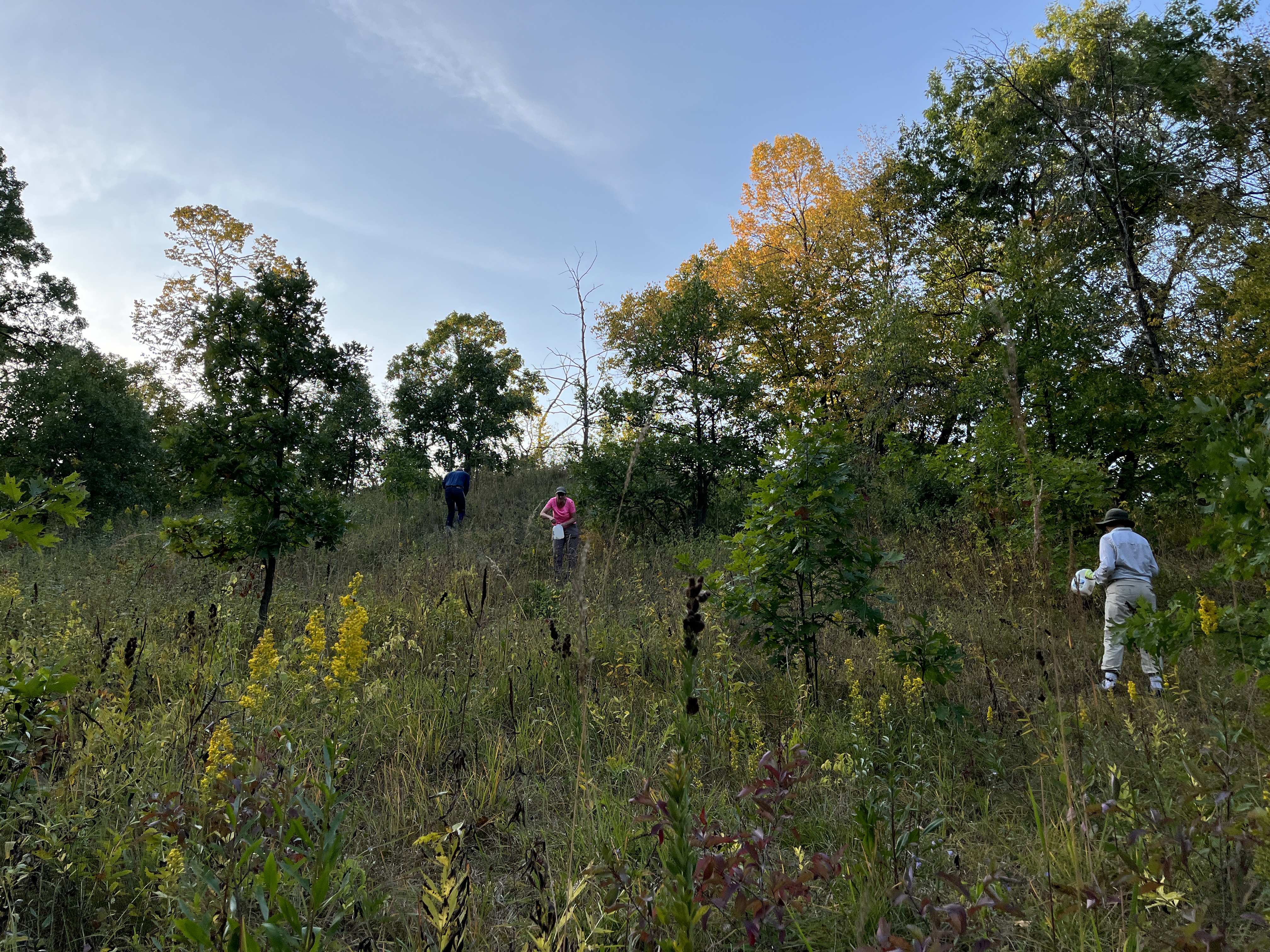
This mesic prairie is part of our restoration work in the river gorge.
The oak savanna at 36th Street and West River Parkway, Minneapolis
We focus our work on restoring and maintaining some of the highest quality plant communities in the river gorge, including several acres of remnant mesic prairie and oak savanna (some of the rarest native plant communities in Minnesota) at 36th Street and West River Parkway in Minneapolis.
Volunteers (River Gorge Stewards) and crews have helped save these remnant acres and turn buckthorn thickets into quality habitat in the heart of the metro. Plus, native plants in the prairie and oak savanna have deep roots that guard the steep hillsides against soil erosion into the river (a critical issue throughout the gorge).
FMR began work in the remnant prairie and oak savanna in 2002, starting with a restoration plan created by local ecologist Carolyn Carr and Great River Greening. FMR began implementing the plan with volunteers, and after years of well-attended public volunteer events, the site had vastly improved.
Since 2008, a smaller group of River Gorge Stewards (the Gorge Leadership Team) has worked with Carolyn, FMR ecologists, and stewardship staff to maintain and enhance the health of the oak savanna and surrounding habitats.
FMR also secured state and federal funding to help push the restoration forward, hiring crews to tackle larger invasive species removal projects at the oak savanna and nearby sites, helping to connect and create larger patches of contiguous, restored river gorge habitat.
The sand flats at 34th Street and West River Parkway, Minneapolis
At the sand flats, one of the more recent expansions in our larger gorge restoration, volunteers and crews are tackling garlic mustard and buckthorn using non-chemical removal methods like critical cutting and buckthorn baggies. Volunteers have also created targeted wildlife habitat piles, a task that not only makes better habitat for wildlife but also helps us dispose of invasive plant material in hard-to-access areas.
We're also focused on improving forest resiliency by planting trees predicted to do well as Minnesota's climate warms.
The maple-basswood forest at East 44th Street and West River Parkway, Minneapolis
In the maple-basswood forest — the southernmost extent of our gorge restoration — volunteers protect remnant populations of Big Woods wildflowers like Dutchman's breeches and bloodroot by removing invasive plants and planting natives. And we continue to expand the borders of our restoration, creating larger buffers of restored habitat around the highest-quality focus areas.
One of our favorite annual traditions is our River Gorge Earth Day cleanup, which draws hundreds of volunteers to this highly used park each year to pick up litter that would otherwise end up in the river.
Find out more and get involved
- Learn more about the geology and natural history of the gorge.
- Check out the full bird list for the Minneapolis portion of the gorge, put together by volunteer Dave Zumeta.
- Find out more about future plans for the locks and dams on this stretch of the river.
- Volunteer with us to restore places like this or join the River Gorge Stewards. If you'd like to be notified of upcoming volunteer events in or near the Mississippi River Gorge, please let us know! Contact our volunteer coordinator at volunteer@fmr.org, 651.477.0925.
- Contact FMR project lead Laura Domyancich-Lee with questions or interesting plant and animal sightings.
Thank you partners and funders!
This work is made possible by Gorge Stewards Program partners and funders: BNSF Foundation, The Environment and Natural Resources Trust Fund, Hennepin County, Longfellow Community Council, Marathon Foundation, Minneapolis Parks and Recreation Board, RBC Wealth Management, Seagate, the US Forest Service, Xcel Energy; and by our generous donors like you!
